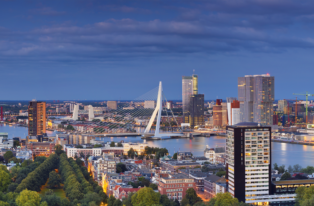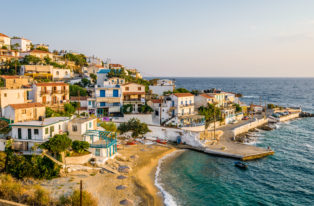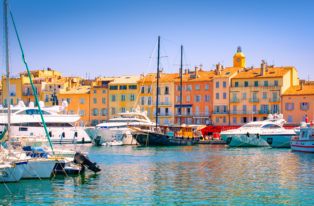“Czesztot on klebcz!”
My knowledge of Eastern Europe was, for most of my youth, based on a single book: King Ottokar’s Sceptre. This comic-strip adventure, first drawn by master cartoonist Hergé in 1939, features the young reporter Tintin and his dog Snowy. Together they travel to the imaginary Kingdom of Syldavia on the trail of a mysterious scientist, who is involved in a plot to overthrow King Muskar III by stealing his sceptre. Hectic stuff for a ten-year-old in the 1970s, especially if his mother only let him choose one comic book every time he went to the library.
Apart from the exciting plot, there were two things about the book that I found intriguing. Firstly, there was a three-page travel brochure, drawn in cartoon style, giving the history of Syldavia, Kingdom of the Black Pelican. I could give you a descriptive summary, but I have taken a picture of me holding the stained and battered album, which has moved house with me fifteen or sixteen times over the years.
After reading this “brochure” again, I decided it was time to confirm my lifelong suspicion that the story was set in Ukraine, which to me always epitomised the unknown world that lay beyond the first line of countries behind the Iron Curtain, whose capitals we had learned at school. (“You would get a Belle-grade if You-go-slave-here, Richard, and Book-a-rest in your Room-ania, otherwise you will discover that Hunger-y is a Buda-pest.”)
I consulted the Great Oracle, which led me straight to Wikipedia, of course, where I soon discovered that Hergé had based the Kingdom of Syldavia and its more aggressive neighbour Borduria on countries in the Balkan. This did seem more logical in light of more recent developments, during which I discovered that Yugoslavia actually consisted of six or seven different countries, each of which had their very own capital, presenting a whole new challenge to geography teachers the world over.
All of which brings me to the second thing that intrigued me about King Ottokar’s Sceptre: the language spoken by the Syldavians and Bordurians in the book. For the greater part of my youth, I truly believed that, in some Slavic language, the Syldavian national motto, “Eih bennek, eih blavek!” really meant “If you gather thistles, expect prickles,” and that “Zralukz! Czesztot on klebcz!” really meant “Look! There’s a dog on that parachute!” How wrong I was, because according to Wikipedia, Hergé based this imaginary language on the “slang of the Marolliens, the people of the working class quarter of Brussels, with the addition of some s and z sounds to make it sound more Slavic.”
And so I have, once again, insulted six or seven countries and possibly two autonomous provinces, as well as their languages, with my ignorance. The only way to make amends is by visiting Belgrade, Kiev, Ljubljana, Novi Sad, Podgorica, Pristina, Sarajevo, Skopje and Zagreb. While I plan my trip, perhaps some kind reader will suggest an easy way to remember which capital goes with which country.
Richard de Nooy











